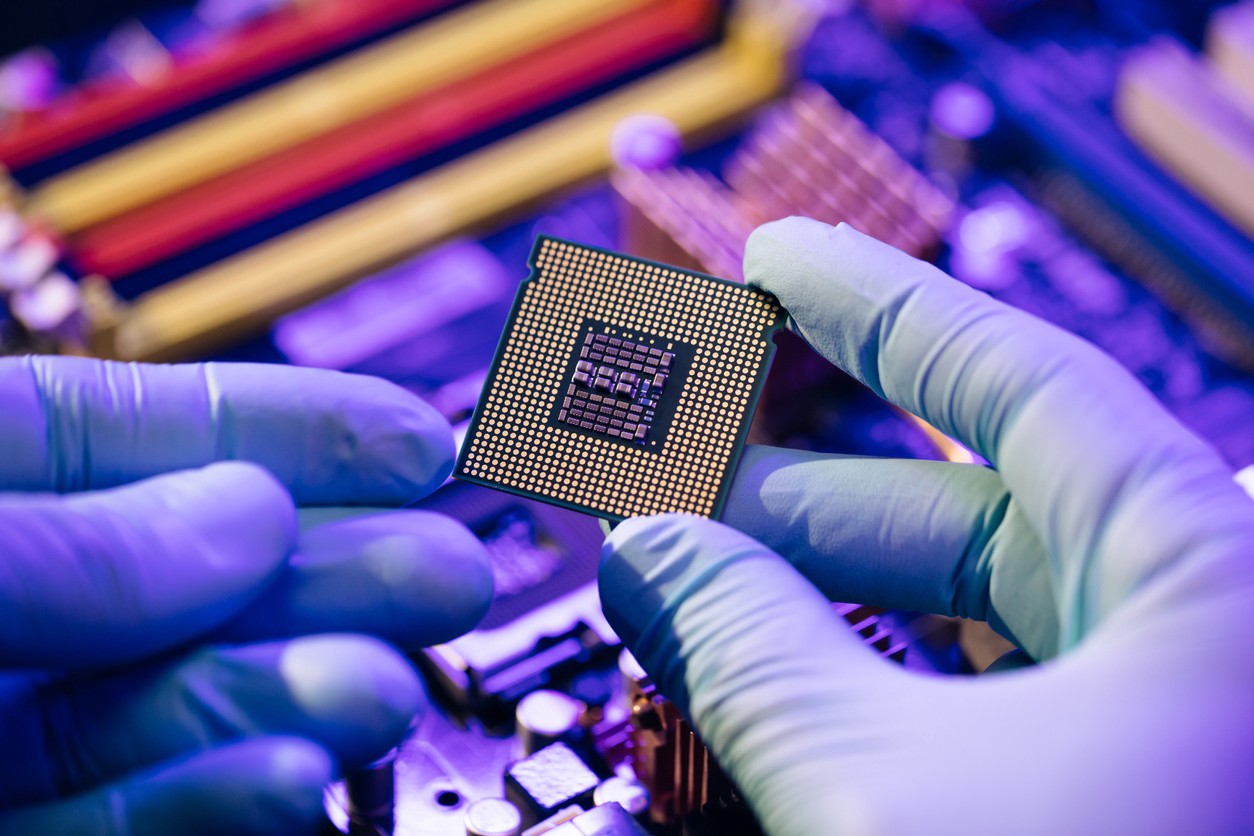by Nicola Phillips, Copywriter
Last October, semiconductor manufacturer GlobalFoundries listed on Nasdaq, becoming the largest US IPO in 2021 by proceeds raised (nearly $2.6 billion).
The company is significant not only for the scale of its public offering, but also for the geography of its manufacturing. At the time of its IPO, GlobalFoundries emphasized that it has facilities in neither China nor Taiwan.
GlobalFoundries is unusual in this regard. Taiwan dominates the industry, with 64% of global semiconductor foundry (manufacturing) revenue, and a 92% share of the world’s most advanced chips. One company, Taiwan Semiconductor Manufacturing Co. (TSMC), accounts for 54% of global foundry revenue.
When TSMC was founded in 1987, it was the world’s first “contract manufacturer.” (TSMC, unlike all of its predecessors, focused exclusively on manufacturing, not on design.) Under this new model, semiconductor engineering firms could focus on design, and then outsource to TSMC for manufacturing.
TSMC’s business model proved successful, and between 1990 and 2020, as Taiwanese preeminence in the market grew, US semiconductor manufacturing capacity commensurately plummeted, from 40% to 12% of the global market.
Today, China has also established a large share of the chip market, given its status as the largest buyer of semiconductors and the dominant global manufacturer in countless industries. Where China lags is in its advanced chip production. The vast majority of chips that China exports are several generations behind the most advanced chips on the market today.
Enter the CHIPS Act
Scientific and technological development has long been a priority for the US, but since the inception of TSMC, the US trails Taiwan in semiconductor manufacturing. Where US companies like Intel and Raytheon used to reign supreme, Taiwan’s TSMC and South Korea’s Samsung now dominate the market.

In 1945, President Franklin D. Roosevelt commissioned a seminal report called “Science — the Endless Frontier.” The report argued that scientific research would be integral to the future success of the United States on the global stage.
A month ago, after thirteen months of deliberation, Congress successfully passed the bipartisan CHIPS (Creating Helpful Incentives to Produce Semiconductors) and Science Act, in part by leveraging a similar argument. (In fact, the initial version of the act was known as the Endless Frontier Act, an ode to that 1945 report.)
The Act is designed to boost US competitiveness in the global chip market — and by extension, in the future of technological innovation. It is an America-first initiative; the rationale is that it will result both in less money leaving the US and in more lucrative exports because production will happen on US shores.
Innovation Via Government
Together with the Inflation Reduction Act passed a few weeks after, the CHIPS Act is a clear signal from Congress that innovation — whether in the realm of computer chips or climate change — will be driven not only by industry, but also by government.
The fact that this was a bipartisan effort is evidence of how unifying a force China is for the US. But a strong government hand in industry is neither a Democratic nor a Republican ideal, and the CHIPS Act potentially sets an interesting precedent for the role that Congress will play moving forward in incentivizing corporate innovation through legislation.
Where the $ Goes
In total, the Act allocates $52 billion to semiconductor research, development, manufacturing, and workforce development.
$10 billion is earmarked specifically for STEM education, an amount that likely won’t make much of a dent if distributed thinly, but that could fund some interesting, unexpected initiatives if invested creatively. Beyond its direct material impact, that money signals just how lucrative a career in chip manufacturing and design is becoming.
Greater Implications
The CHIPS Act has important geopolitical implications, but it also has the effect of value-signaling to the world the growing significance of semiconductor manufacturing. Semiconductor manufacturing is to the 2020s what software development was to the 1990s, and the bipartisan passage of the CHIPS Act reinforces this.
Regardless of the American stake in the global semiconductor industry (or lack thereof), the US still holds a powerful position on the global stage. A significant investment in semiconductors from the leaders of the western world is a tremendous win for the chips industry.
As for what the Act will do to the balance of advanced chip production, Congress is betting on it reestablishing the US as a major player in the industry. A reinvigoration of US-based production should, at the very least, help insulate the US from mounting tensions between China and Taiwan. And if the CHIPS Act does manage to make a significant dent in the Taiwanese foundry market, it’s likely it will disrupt the global balance of power over the next decade — in exactly what way remains to be seen.




